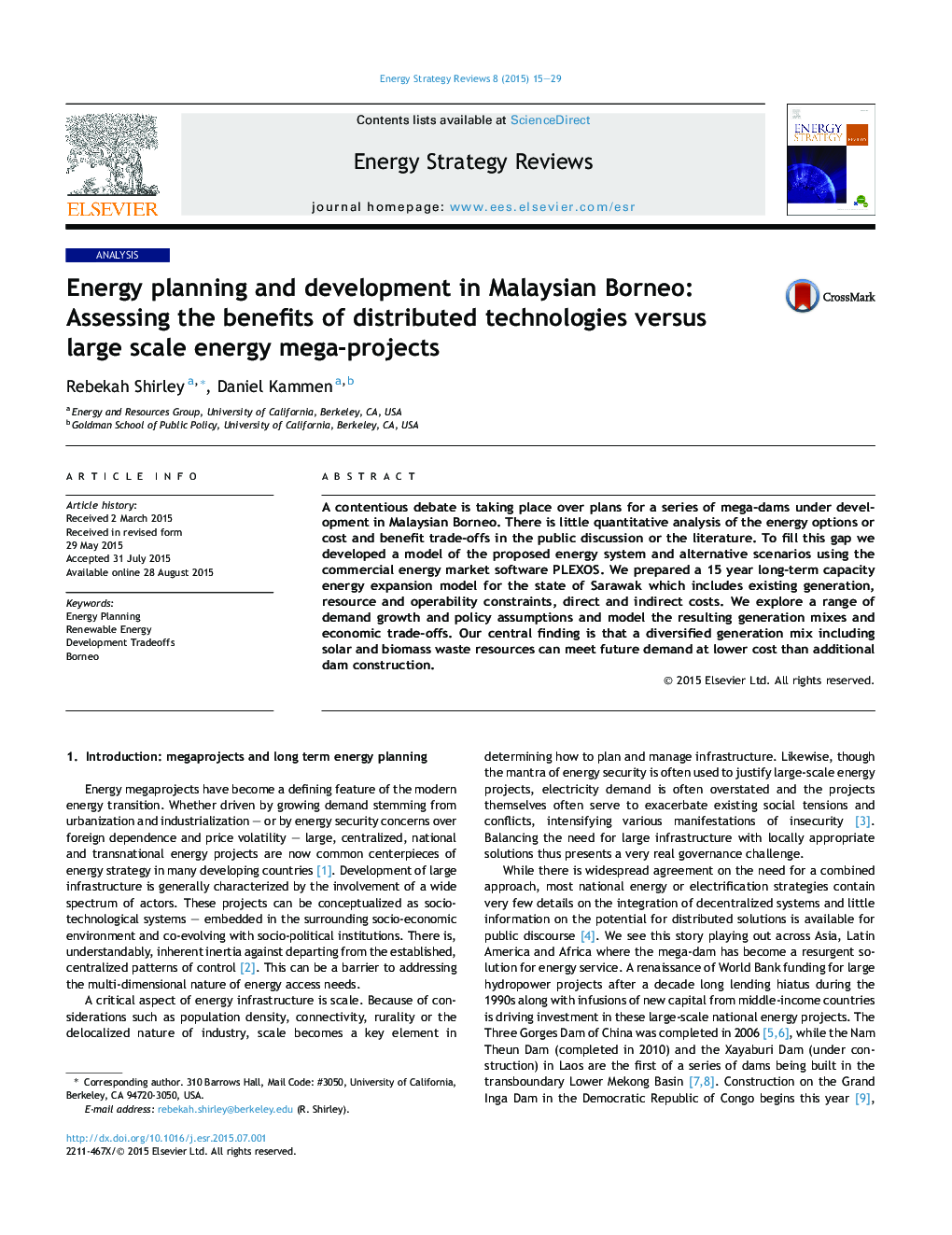| کد مقاله | کد نشریه | سال انتشار | مقاله انگلیسی | نسخه تمام متن |
|---|---|---|---|---|
| 1029803 | 1483530 | 2015 | 15 صفحه PDF | دانلود رایگان |

• Growing debate over energy megaprojects in developing countries highlights the limited quantitative analysis in literature.
• We prepare a capacity expansion model for a state in Borneo, Southeast Asia where mega-dam developments are underway.
• Comparing optimal expansion under various demand growth scenarios shows building excess capacity increases total system cost.
• Under current prices renewable technologies that use solar and biomass waste are technically feasible and cost comparative.
• Government incentive schemes can significantly change the optimal capacity expansion plan and affect total system cost.
A contentious debate is taking place over plans for a series of mega-dams under development in Malaysian Borneo. There is little quantitative analysis of the energy options or cost and benefit trade-offs in the public discussion or the literature. To fill this gap we developed a model of the proposed energy system and alternative scenarios using the commercial energy market software PLEXOS. We prepared a 15 year long-term capacity energy expansion model for the state of Sarawak which includes existing generation, resource and operability constraints, direct and indirect costs. We explore a range of demand growth and policy assumptions and model the resulting generation mixes and economic trade-offs. Our central finding is that a diversified generation mix including solar and biomass waste resources can meet future demand at lower cost than additional dam construction.
Journal: Energy Strategy Reviews - Volume 8, July 2015, Pages 15–29